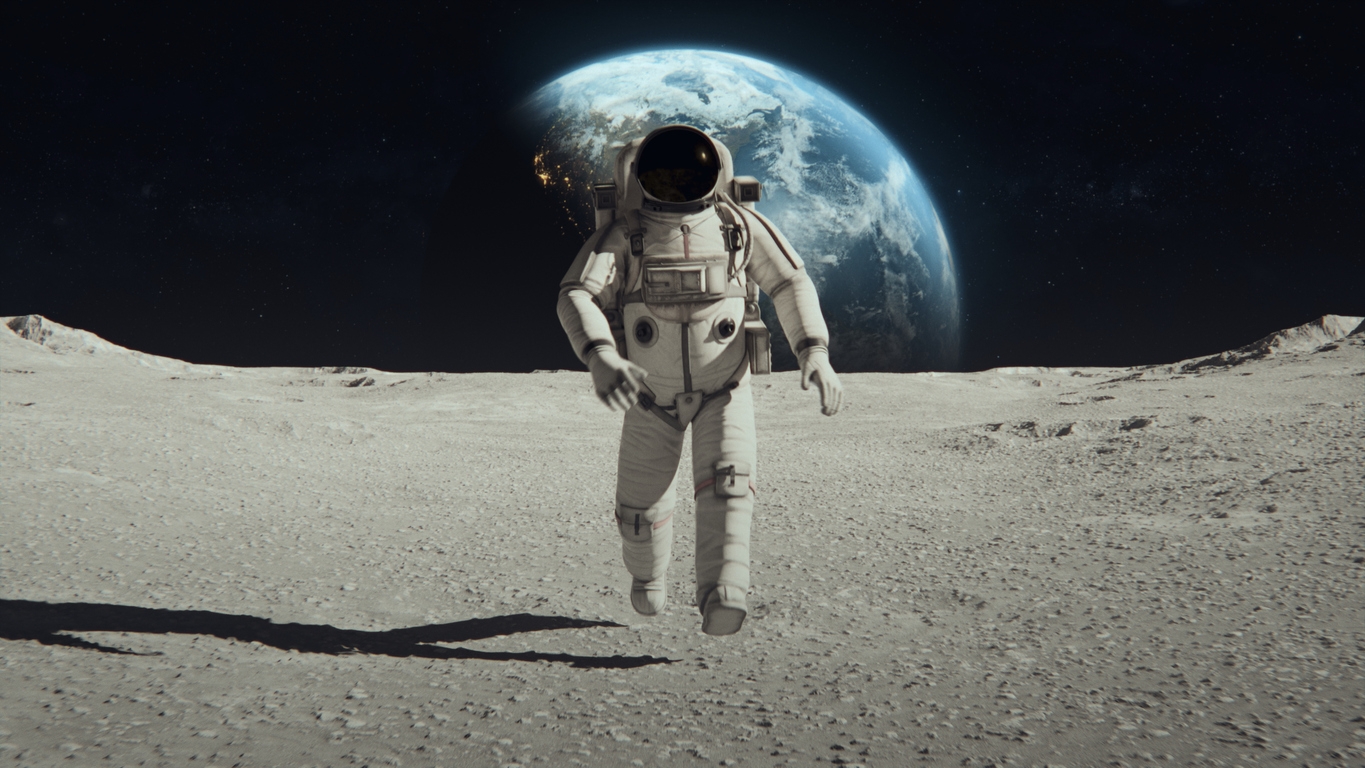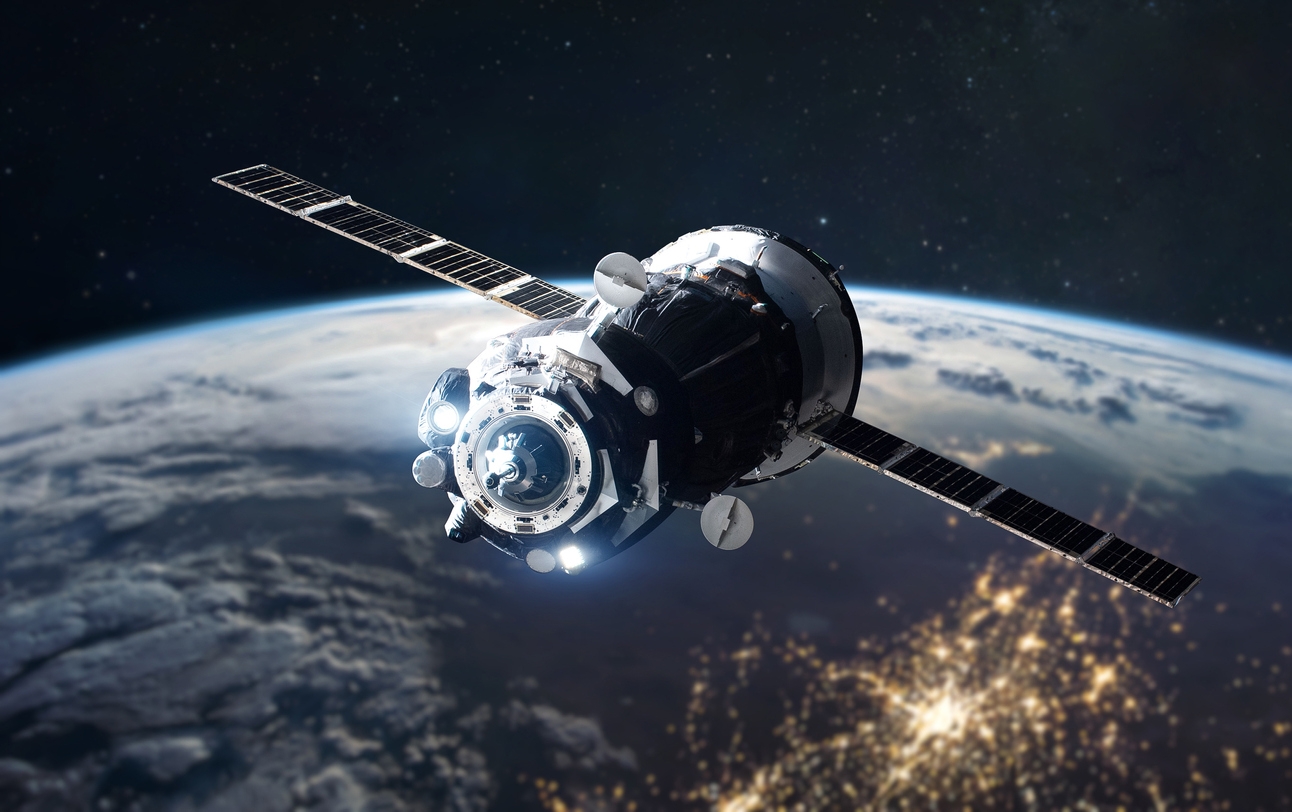The exploration of space holds profound importance, marking humanity’s quest for knowledge beyond Earth’s boundaries. The Space Race, a pivotal era in space exploration, unfolded against the backdrop of the Cold War tension between the United States and the Soviet Union. This geopolitical rivalry became a catalyst, propelling nations into a fervent competition to achieve unprecedented feats in space travel. The pursuit of technological supremacy and scientific breakthroughs characterized this era, leaving an enduring legacy in the annals of human achievement.
The Early Beginnings

| Year | Milestone |
| 1957 | Launch of Sputnik 1 by the Soviet Union |
| 1958 | Launch of Explorer 1 by the United States |
| 1961 | Yuri Gagarin becomes the first human in space |
The Launch of Sputnik 1: The World’s First Artificial Satellite
In the late 1950s and early 1960s, the world was captivated by the rapid advancements in space technology. The launch of Sputnik 1, a humble-looking spherical satellite, on October 4, 1957, marked the dawn of the Space Age. [1] This 58-centimeter-wide sphere emitted radio signals that were received worldwide, sending a clear message: the Soviet Union had surged ahead in space exploration.
The launch of Sputnik 1 is often considered the starting point of the Space Age and fueled the sense of urgency in the United States to catch up in space exploration.
US Caught Up With the Explorer 1
However, the United States swiftly responded. On January 31, 1958, the U.S. launched its first satellite, Explorer 1, ushering in the American space program. [2] This marked the beginning of a fierce competition known as the Space Race, driven by political, military, and ideological tensions of the Cold War.
Yuri Gagarin: The First Human In Space
Then, on April 12, 1961, Yuri Gagarin, a Soviet cosmonaut, became an international hero when he boarded the Vostok 1 spacecraft and completed a single orbit around the Earth. [3] His mission lasted just 108 minutes, but it forever etched his name in history as the first human to venture into the cosmos.
Gagarin’s successful mission was a major propaganda victory for the Soviet Union during the height of the Cold War. His courage and triumph made him a symbol of Soviet space achievements and a testament to human potential.
These early achievements were significant not only for their scientific advancements but also for the political backdrop of the Cold War. The United States and the Soviet Union, locked in an ideological rivalry, viewed space exploration as a means to showcase their technological prowess and global influence. This competition fueled rapid advancements in space technology and led to an era of space exploration that continues to shape our world today.
The American Response: Mercury and Apollo Programs
The American response to the Space Race came in the form of the Mercury and Apollo programs.
Project Mercury: Pioneering Human Spaceflight
Project Mercury was the United States’ inaugural human spaceflight program initiated by NASA in 1958. [4] Its primary objective was to launch American astronauts into space and safely return them to Earth. This groundbreaking endeavor laid the foundation for subsequent space exploration missions.
Mission | Date | Astronaut | Type of Flight |
Mercury-Redstone 3 | May 5, 1961 | Alan Shepard | Suborbital Flight |
Mercury-Redstone 4 | July 21, 1961 | Gus Grissom | Suborbital Flight |
Mercury-Atlas 6 | Feb 20, 1962 | John Glenn | Orbital Flight |
Mercury-Atlas 7 | May 24, 1962 | Scott Carpenter | Orbital Flight |
Mercury-Atlas 8 | Oct 3, 1962 | Wally Schirra | Orbital Flight |
Mercury-Atlas 9 | May 15-16, 1963 | Gordon Cooper | Orbital Flight |
Project Mercury successfully demonstrated that humans could function effectively in the challenging environment of space, paving the way for subsequent programs like Gemini and Apollo. Each mission contributed crucial insights into the complexities of space travel, fostering advancements in technology and preparing the groundwork for the United States’ continued exploration beyond Earth’s atmosphere.
Project Apollo: The Triumph of Lunar Exploration

Mission | Launch Date | Objective | Key Achievements |
Apollo 1 | Jan 27, 1967 | Earth Orbit Test | Tragically, a cabin fire during pre-launch test claimed the lives of astronauts Grissom, White, and Chaffee. |
Apollo 7 | Oct 11, 1968 | Earth Orbit Test, Crewed Mission | First crewed Apollo mission; tested Command/Service Module (CSM). |
Apollo 8 | Dec 21, 1968 | Lunar Orbit, Crewed Mission | First human mission to orbit the Moon. |
Apollo 9 | Mar 3, 1969 | Earth Orbit Test, Crewed Mission | Tested Lunar Module (LM) in Earth's orbit |
Apollo 10 | May 18, 1969 | Lunar Orbit, Crewed Mission | "Dress rehearsal" for lunar landing; LM descended close to the Moon's surface. |
Apollo 11 | Jul 16, 1969 | Lunar Landing, Crewed Mission | First human landing on the Moon; Armstrong and Aldrin walked on the lunar surface. |
Apollo 12 | Nov 14, 1969 | Lunar Landing, Crewed Mission | Second lunar landing; Conrad and Bean conducted explorations. |
Apollo 13 | Apr 11, 1970 | Lunar Orbit, Abort Mission | Oxygen tank explosion; safely returned to Earth without landing |
Apollo 14 | Jan 31, 1971 | Lunar Landing, Crewed Mission | Third lunar landing; Shepard hit golf balls on the Moon. |
Apollo 15 | Jul 26, 1971 | Lunar Landing, Crewed Mission | First mission with lunar rover; Scott and Irwin explored extensively. |
Apollo 16 | Apr 16, 1972 | Lunar Landing, Crewed Mission | Fourth lunar landing; Young and Duke explored Descartes Highlands. |
Apollo 17 | Dec 7, 1972 | Lunar Landing, Crewed Mission | Final lunar landing; Cernan and Schmitt explored Taurus-Littrow. |
Project Apollo encompassed a total of six lunar landings, each contributing valuable scientific data, lunar samples, and unparalleled advancements in space exploration technology. This remarkable program remains a testament to human ingenuity and determination to reach for the stars.
Key Players: NASA and the Soviet Space Program
NASA, the United States’ premier space agency, was founded on July 29, 1958, by the National Aeronautics and Space Act. [6] Its primary goal was to ensure American leadership in space exploration, research, and technology. Under NASA’s leadership, these programs made significant strides in crewed spaceflight, spacecraft development, and lunar exploration. NASA also launched the space shuttle program for human spaceflight in 1972.
The Soviet Union, NASA’s main competitor during the Space Race, also made remarkable achievements. The Soviet Space program’s achievements intensified the space race and spurred competition between superpowers.[7] Here is the timeline of space exploration:
Year | Event/Mission | Description |
1957 | Sputnik 1 | Soviet Union launches the first artificial satellite. |
1958 | NASA Established | The U.S. creates the National Aeronautics and Space Administration (NASA). |
1961 | Yuri Gagarin | Yuri Gagarin becomes the first human in space. |
1961-1963 | Mercury Program | NASA's Mercury program conducts six crewed spaceflights. |
1963-1966 | Voskhod Program | The Soviet Union launches the Voskhod program with new |
1966 | Gemini Program | NASA's Gemini program conducts ten crewed spaceflights. |
1967 | Tragedy of Apollo 1 | A cabin fire during a pre-launch test claims the lives of three astronauts. |
1969 | Apollo 11 | Neil Armstrong and Buzz Aldrin become the first humans to walk on the Moon. |
1971-1972 | Apollo 14-17 | Further Apollo missions continue lunar exploration. |
1972 | Last Apollo Mission (Apollo 17) | The final Apollo mission marks the end of NASA's lunar program. |
1975 | Apollo-Soyuz Test Project | First joint U.S.-Soviet space mission in Earth orbit. |
1981 | Space Shuttle Program (STS-1) | NASA launches the Space Shuttle program with the Columbia shuttle. |
1986 | Challenger Disaster | Space Shuttle Challenger disintegrates shortly after liftoff, resulting in the loss of seven astronauts. |
1991 | Soviet Union Dissolves | The end of the Cold War saw the dissolution of the Soviet Union. |
2001 | International Space Station (ISS) | Construction of the ISS begins |
These two giants of space exploration engaged in a heated rivalry that fueled unprecedented advancements in space technology and science during the mid-20th century. Their successes and failures profoundly impacted the course of space history and brought humanity closer to understanding the cosmos.
Technological Advancements and Challenges
The Space Race was a testament to human innovation and engineering prowess, pushing the boundaries of what was possible in space exploration. Here, we delve into the technological achievements and the hurdles faced by both superpowers.
Development of Rockets and Spacecraft
The Space Race was a period of immense growth in rocketry and space technology, laying the foundation for future exploration and international cooperation in space. Both the United States and the Soviet Union made significant strides in rocket technology:
Soviet Achievements
The Soviet Union developed the R-7 Semyorka, the world’s first intercontinental ballistic missile. [8] It paved the way for launching the first artificial satellite, Sputnik 1, in 1957. Subsequently, the USSR introduced Vostok and Soyuz spacecraft, demonstrating capabilities in crewed spaceflight.[9]
American Innovations
NASA’s Mercury-Redstone [10] and Atlas [11] rockets propelled the early crewed missions. The Gemini program furthered rendezvous and docking techniques crucial for lunar missions. Finally, the mighty Saturn V rocket propelled Apollo missions to the Moon.[12]
Overcoming Challenges and Setbacks
Space exploration came with its share of challenges and setbacks:
Space Race Risks
Intense competition drove both nations to take risks. The Soviet Luna program suffered multiple failures before achieving success. [13] Similarly, the U.S. faced setbacks like the Apollo 1 fire [14] and the Challenger disaster. [15]
Space Race Triumphs
Triumphs like Yuri Gagarin’s historic flight, Apollo 11’s Moon landing, and the joint Apollo-Soyuz mission symbolized the achievements in space exploration. [16]
The Modern Era: International Collaboration and the ISS
In contrast to the fierce competition of the early Space Race, the modern era of space exploration has witnessed a remarkable transformation through international collaboration. Central to this era is the establishment of the International Space Station (ISS), a symbol of global unity in space exploration.
The Establishment of the International Space Station (ISS)
The ISS, an orbiting laboratory, represents a monumental achievement in human history. Its construction began in the late 1990s through collaborative efforts from space agencies around the world, including NASA (United States), Roscosmos (Russia), ESA (European Space Agency), JAXA (Japan Aerospace Exploration Agency), and CSA (Canadian Space Agency). This collaborative endeavor transcended geopolitical boundaries, marking a shift towards shared goals in space exploration.
Global Collaboration in Space Exploration
International cooperation in space extends beyond the ISS. Various countries have joined forces in missions to explore the Moon, Mars, and other celestial bodies. The benefits of collaboration are evident in shared resources, knowledge exchange, and the pooling of expertise. It has not only reduced costs but also accelerated advancements in space technology.
The Future of Space Exploration
As we stand on the precipice of the future, the horizons of space exploration continue to expand with exciting prospects and possibilities.
Mars Exploration and Colonization Prospects
Mars, often referred to as the “Red Planet,” has captured our collective imagination for decades. Recent missions, like NASA’s Perseverance rover and the UAE’s Hope probe, have reinvigorated our exploration efforts. The dream of human missions to Mars is becoming a reality.
Scientists and engineers are actively working on the technology required to send astronauts to the Martian surface and establish a human presence. These missions promise to unveil profound insights into the history and potential habitability of Mars.
The concept of colonization is not far-fetched. It’s not just about planting flags but establishing sustainable habitats, harnessing Martian resources, and creating a potential backup for humanity in the case of Earth’s challenges.
The Role of Private Companies in Space Exploration
While government space agencies have been at the forefront of space exploration, the recent emergence of private companies has significantly altered the landscape. Companies like SpaceX, Blue Origin, and Virgin Galactic are pioneering commercial space ventures.
SpaceX, led by Elon Musk, has made remarkable strides in reusability, reducing the cost of access to space. Their ambitious plans include missions to Mars and the development of a sustainable human presence on the Moon.
Organization | Key Initiatives and Efforts |
NASA (National Aeronautics and Space Administration) |
|
Roscosmos (Russian Federal Space Agency) |
|
ESA (European Space Agency) |
|
SpaceX |
|
Blue Origin |
|
Virgin Galactic |
|
These private entities are accelerating innovation and commercializing space travel, ushering in an era where space could become more accessible to ordinary people
Conclusion
The Space Race, born out of Cold War tensions, ignited a fervent pursuit of space exploration and marked a pivotal chapter in human history. From the launch of Sputnik 1 to the historic Apollo 11 moon landing, it was a testament to human determination and innovation. While the rivalry between the United States and the Soviet Union fueled the initial push to reach the stars, today’s space exploration is marked by international cooperation, with organizations like NASA leading the way.
The establishment of the International Space Station (ISS) stands as a symbol of global unity in our quest to unlock the mysteries of the cosmos. As we look to the future, the prospects of Mars exploration and colonization, as well as the active involvement of private companies, promise exciting advancements. Space exploration continues to inspire, expand our understanding of the universe, and foster a sense of wonder that transcends borders and politics.
References
- NASA – NSSDCA – Sp7acecraft – Details. (n.d.). Welcome to the NSSDCA. https://nssdc.gsfc.nasa.gov/nmc/spacecraft/display.action?id=1957-001B
- Explorer 1 overview. (2023, August 21). NASA. https://www.nasa.gov/history/explorer-1-overview/
- Tillman, N. T. (2018, October 12). Yuri Gagarin: First man in space. Space.com. https://www.space.com/16159-first-man-in-space.html
- What was the mercury program? (n.d.). National Air and Space Museum. https://airandspace.si.edu/stories/editorial/what-was-mercury-program
- Project Apollo. (2019, May 31). The Planetary Society. https://www.planetary.org/space-missions/apollo
- NASA: 60 years of space exploration. (2023, June 23). Space.com. https://www.space.com/38700-nasa-history.html
- The story of Soviet and Russian space exploration. (2017, May 30). ThoughtCo. https://www.thoughtco.com/soviet-space-program-history-4140631
- R-7 history. (2022, May 28). World Space Flight. https://www.worldspaceflight.com/addendum/r7/r7_history.php
- Russian life support systems: Vostok, Voskhod, and soyuz. (2018, June 23). SpringerLink. https://link.springer.com/referenceworkentry/10.1007/978-3-319-09575-2_39-2
- Darling, D. (n.d.). Mercury-redstone. The Worlds of David Darling. https://www.daviddarling.info/encyclopedia/M/Mercury-Redstone.html
- Atlas. (n.d.). Earthdata. https://www.earthdata.nasa.gov/sensors/atlas
- What was the Saturn V? (Grades 5-8). (2023, August 10). NASA. https://www.nasa.gov/learning-resources/for-kids-and-students/what-was-the-saturn-v-grades-5-8/
- Daniel.hani@sprylab.com. (n.d.). A history of the Soviet Union’s moonlanding Luna programme. BBC Sky at Night Magazine: Astronomy, Astrophotography & Space News. https://www.skyatnightmagazine.com/space-missions/soviet-luna-programme
- 55 years ago: The Apollo 1 fire and its aftermath. (2023, September 6). NASA. https://www.nasa.gov/history/55-years-ago-the-apollo-1-fire-and-its-aftermath/
- Challenger: Shuttle disaster that changed NASA. (2022, February 1). Space.com. https://www.space.com/18084-space-shuttle-challenger.html
- Tate, K. (2015, July 17). Apollo-soyuz: How the first joint space mission worked (Infographic). Space.com. https://www.space.com/29972-apollo-soyuz-space-mission-infographic.html



